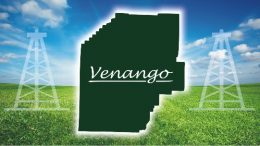You can extend the vegetable gardening season with low tunnels, cold frames, hot beds, and cloches. Learn how to use these tools and about types of vegetables that can be harvested in fall and winter.
While fall can signal the beginning of the end of the gardening year, it doesn’t have to. Home gardeners have several options when it comes to extending the vegetable gardening season and growing fall (cool season) vegetables.
As a reminder, fall is the preferred time to test your garden soil. By testing in the fall, you will have the analysis/recommendations necessary to amend your soil, as needed, prior to winter. By applying soil amendments in the fall, your garden will be ready to go in the spring.
Knowing your frost/freeze dates is the first step in planning your Fall gardening activities. Your frost/freeze dates can be easily found using your zip code. To access an online tool, go to look up your first and last freeze/frost dates by zip code and enter your zip code for your frost/freeze free dates. For instance, the zip code is 16802 (Penn State’s main campus at University Park, PA) and the frost/freeze dates are October 12 – May 10. This equates to a growing season of about 155 days. This
information is helpful when selecting your cool season crops.
In this article we’ll look at two fall gardening topics: season extenders and growing fall vegetable crops.
Season Extenders
As the name implies, season extenders allow gardeners to continue growing vegetables well past (or before) the frost/freeze dates. Growing vegetables during these off-season times is frequently referred to as growing on the “shoulders” of the season. Factors a gardener should consider when deciding what type(s) of season extenders to use include a realistic determination of the amount of time, money and effort that can be allocated to setting up and using the extenders.
An unrealistic estimate of any one or more of these factors could lead to dissatisfaction with trying to grow on the shoulders of the season and leave the home gardener feeling deflated. So, if you are going to consider obtaining and setting up season extenders, plan ahead for your material needs as well as the crops you intend to grow. Cool season crop selection will be addressed later in this article. Examples of season extenders include low tunnels, cold frames and hot beds, and cloches.
Low Tunnels
Low tunnels offer home gardeners a fast, easy, and effective way to create a season extender. The hoops create a structure that will protect the plants from insects, physical damage, as well as low temperatures.
Low tunnels consist of three parts: the material to create the tunnel (fabric or plastic), the galvanized 10-gauge steel wires used to support fabric or plastic covering (PVC and bamboo may also be used to create these support pieces), and a sandbag or similar weighted object, required to keep the covering snug and in place. The life expectancy of the hoop will be partially determined by the base material, weather, and usage.
Hoop sizes vary depending upon how much room is required by the mature vegetables. Commercially available hoops are available in a variety of sizes (lengths). Depending upon the crops grown, gardeners may have different sized hoops and may also create their own heights and widths to match their garden plan.
The hoops should be placed over the center of the crop row about 3 to 4 feet apart, secured in the soil. The fabric or poly may be secured by sandbags (one placed by the side of each hoop). Alternatively, the edge of the hoop covering may be buried a few inches in the soil.
In the fall and spring, the tunnels may be covered with a fabric row covering. As the temperature drops, the fabric covering may be replaced with a 4mm to 6mm poly. When the low tunnels are not in use, remove them from the garden, along with the coverings. The hoops should be cleaned and stored until need again. Inspect the fabric and poly row coverings for damage and replace as needed. Holes in either covering may result in loss of heat within the tunnel and an opportunity for insects to settle into tunnel so, it’s best replace the coverings when the fabric or plastic develops holes or openings.
Cold frames and hot beds
Cold frames and hot beds can be used to effectively grow cool season crops in the fall and in the spring. In the fall, crops may be directly seeded into either bed or grown in containers or flats in the beds. The primary difference between a cold frame and hot bed is that a cold frame uses only sunlight to moderate the interior temperature, while the hot bed uses either an electric heat mat or other outside heat source. In some cases, manure may be used as a heat source.
Cold frames and hot beds can be either made at home or purchased as a kit or a completed unit. The diversity of options is great for the home gardener as some of us are “handy,” other of us, not so much. The good news is there is a cold frame and/or hot bed for each of us.
Regardless of the type of season extender selected, the overarching goal is to create a sheltered place for cool season plants to grow and/or overwinter. Cold frames and hot beds collect heat as the sun’s rays shine through the primary bed covering and heat the interior of the bed. The bed covering may be made of glass (old windows work great), plastic (as with the low tunnels), fiberglass or similar products. In some designs, the bed covering will be installed on angle to capture as much sunlight as possible. This angular design is not necessary but helpful in capturing the sun’s heat.
Take care when setting up the frame or bed. The ideal location is on a slight slope, to assist with drainage, with a southern or southeastern exposure. This allows for maximum sun absorption. The back of the box should be next to either a wall or hedge to protect the plants from cold winds and winter precipitation. Again, while this is not a “must,” protection from cold winds, ice and snow will help retain heat captured within the bed. The beds may be used in the spring to start seeds as well as harden off maturing seedlings. Depending upon winter temperatures, certain flowers and herbs may be overwintered in the beds. Adding straw around the overwintering plants will help to insulate the roots against freezing temperatures.
Cloches
Traditionally, cloches were glass, bell-shaped coverings placed over individual plants.
Over the course of time, the term “cloche” has been expanded to include individual coverings made from plastic. In addition, the term cloche also now includes movable, multi-plant coverings. These movable, multi-plant coverings may be constructed of wood, fabric, or other material. Regardless of the material used, the goal is the same, to create a space that will protect the tender plants from cold temperatures, brisk and/or drying winds and damaging insects.
Growing Fall Vegetables
Warm-season and cool-season vegetables defined
Before plunging into the topic of growing fall vegetables, there are two important and relevant horticultural terms we should define: warm-season and cool-season vegetables. A warm-season vegetable completes its life cycle in one growing season. Warm-season vegetables are often transplanted when the soil has warmed, and in some cases, may also be directly seeded into the soil. Examples of warm-season vegetables include tomatoes, eggplants, beans, cucumbers, peppers, sweet potatoes, watermelon, and summer squash.
A cool-season vegetable needs the cooler temperatures to germinate and set seed. Cool-season vegetables may also be referred to as fall or shoulder vegetables because not only are they some first to be planted in the spring but may also be planted later into the season. These fall crops are excellent candidates for use with season extenders and tend to be leafy greens and root crops. Common cool-season vegetables include Asian greens, asparagus, beets, broccoli, Brussels sprouts, chives, cabbage, carrots, cauliflower, Swiss chard, kale, leek, lettuce, onion, parsnips, peas, radishes, spinach, and turnips.
Cool-season crops may grow in warmer temperatures, but the quality of the produce may suffer from the higher temperatures. A good example of this is the radish left in the soil too long. The radish will become fibrous, spicy and will also bolt. Bolting or “going to seed” is caused by a change in temperature and/or day length.
Winter Sweetening
You may have heard people say certain vegetables taste sweeter following a light frost. According to the link below, winter sweetening is a phenomenon you often see in vegetables that grow naturally in cold weather. While the first frost of fall will kill lots of plants, there are many varieties, root crops in particular, that will survive these much colder temperatures. This is due, in part, to their ability to convert starch into sugar. Over the course of the growing season, these vegetables store up energy in the form of starches. When temperatures start to drop, they convert these starches into sugars, which act as an anti-freezing agent for their cells. This change doesn’t happen overnight, but as long as you pick your root vegetables sometime after the first frost of autumn, chances are good that they’ll taste a lot sweeter than if you’d picked them in the summer.
Carrots, turnips, rutabagas, and beets are all roots that get sweet with frost. Some other vegetables that get sweet in winter are cole crops such as, brussels sprouts, broccoli, and kale, and most leafy greens.
For additional information on winter sweetening, refer to this link: Cold Sweetening Root Crops
Planting Times
Calculating planting times is crucial for fall vegetables when transplants are used.
Note that Days To Maturity (DTM) found on seed packets begins on the date the plant is transplanted outdoors, not the date it is seeded indoors. By way of example, here are a few sample seed starting and planting dates:
Brussels sprouts – start indoors 5 to 6 weeks before planting outdoors
– Plant outdoors 5 weeks after last frost
– DTM 90 – 120
Head lettuce – indoor growing time – 5 to 7 weeks
– Transplant outdoors 1 to 2 weeks before the last frost date
– DTM – 40 to 90 days
Onions – indoor growing time prior to transplanting – 9 to 11 weeks
– When to plant outdoors – 4 weeks before last frost
– DTM – 60 to 110 days
The list below may be helpful in determining the “drop dead” planting dates for certain fall vegetables.
Last Planting Dates from Cornell University
June 20
Beans, Lima
Edible Cowpeas
Herbs, most
Muskmelons*
Okra*
Popcorn
Edible soybeans
Tomatoes (late)*
Watermelon*
July 10
Beans, Pole Snap
Brussels sprouts
Cabbage (late)
Celeriac
Celery*
Eggplant*
Leeks
Peppers
Sweet corn (med.)
July 25
Beans, Snap
Cabbage (medium)*
Carrots
Cauliflower (late)*
Chinese cabbage
Cucumbers
Lettuce, head
Lettuce, Romaine
Onions, green
Parsley
August 15
Beets
Broccoli (late)*
Cabbage (early)*
Collards
Endive
Kale
Kohlrabi
Lettuce, Bibb
Mustard
Peas
August 30
Broccoli (early)*
Cauliflower (early)*
Leaf lettuce
Spinach
Turnip
September 10
Radish
* Indicates transplant
Source: Last Planting Dates, Cornell Cooperative Extension
Suggested Varieties of cold-weather vegetables
The suggested varieties and associated growing notes are from Mother of a Hubbard. See references for full citation.
1. Carrots — Scarlet Nantes and Autumn King
2. Spinach — Savoy (deeply crinkled) types are much more cold-hardy than flat-leaf varieties, so choose varieties like Winter Bloomsdale and Tyee.
3. Leeks — Bleu de Solaise and Bandit. Note that there is considerable variation in the freezing susceptibility of leek varieties; although most leeks are very cold-tolerant, the darker, blue-green varieties are most likely to survive plunges to 0°F (-18°C).
4. Collards — collards are also superior to kale when it comes to freeze-tolerance; when Lacinato and Red Russian kale are wilted and brown, collards continue to hold. Collard variety Blue Max is a favorite, with high yields, and the greatest degree of cold-hardiness (down to 0°F/-18°C).
5. Parsnips — parsnips are generally tolerant to 0°F (-18°C). Isis recommends variety Hollow Crown, a great heirloom parsnip with superior flavor.
6. Lettuces — Cold tolerance also varies widely among lettuce varieties — generally, heat and drought-tolerant varieties are also the most cold-hardy (which makes sense, if you know how plants survive freezing temperatures). The easiest way to find out which varieties perform well in your garden climate is with a mixed seed packet, such as Wild Garden Seed’s Lettuce mix (it contains dozens upon dozens of varieties)—sow the seeds, and see which varieties survive.
7. Cabbage — Although some cabbage varieties are damaged by harder freezes, there are several varieties of overwintering cabbage that hold well left unprotected in the field. Similar to spinach, the most cold-tolerant cabbages are savoy types with deeply crinkled leaves. Try January King, or one of its offspring, Marabel.
8. Turnips — Turnips are not as cold-hardy as the other crops that made this list, so if you’re growing through the winter, make sure to give them protection. Hakurei, a smooth-skinned, white variety can be grown in cold frames. Although Hakurei is arguably the best turnip variety, it is also one of the least cold-tolerant and does not survive dips below 10°F (-12°C) very well, even with protection, as almost the entire root rests on top of the soil. You can fix that by mulching it heavily, or by selecting a turnip variety with thicker skins and below-ground root production, like Golden Globe.
9. Mache and Claytonia — Some growers prefer mache’s nutty flavor to spinach, which it also beats for cold hardiness. If you don’t wish to bother with a cold frame or low tunnel, mache (also known as corn salad) easily survives winters unprotected in zone 6 and higher. Also known as miner’s lettuce, claytonia offers a striking contrast with incredibly tender, spoon-shaped leaves.
10. Chard — green or white chards are more cold-hardy than the popular multicolored variety, Bright Lights. Some gardeners prefer Verde de Taglio for winter growing (which also has much less of chard’s earthy flavor that some don’t appreciate yet); Fordhook Giant also grows well in cold temperatures. When real winter sets in, protect chard in a cold frame or low tunnel for winter harvests.
Exploring different types of season extenders and becoming more familiar with cool-season vegetables will add a new and challenging aspect to mastering the art and skill of backyard gardening. Good luck; and if you have questions, contact your local Extension office.
This educational blog is a series of informative articles from the Penn State Master Gardeners volunteers plus news concerning the group and their activities. For more information, click here.




































